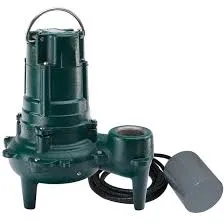Dutch
- Afrikaans
- Albanian
- Amharic
- Arabic
- Armenian
- Azerbaijani
- Basque
- Belarusian
- Bengali
- Bosnian
- Bulgarian
- Catalan
- Cebuano
- Corsican
- Croatian
- Czech
- Danish
- Dutch
- English
- Esperanto
- Estonian
- Finnish
- French
- Frisian
- Galician
- Georgian
- German
- Greek
- Gujarati
- Haitian Creole
- hausa
- hawaiian
- Hebrew
- Hindi
- Miao
- Hungarian
- Icelandic
- igbo
- Indonesian
- irish
- Italian
- Japanese
- Javanese
- Kannada
- kazakh
- Khmer
- Rwandese
- Korean
- Kurdish
- Kyrgyz
- Lao
- Latin
- Latvian
- Lithuanian
- Luxembourgish
- Macedonian
- Malgashi
- Malay
- Malayalam
- Maltese
- Maori
- Marathi
- Mongolian
- Myanmar
- Nepali
- Norwegian
- Norwegian
- Occitan
- Pashto
- Persian
- Polish
- Portuguese
- Punjabi
- Romanian
- Russian
- Samoan
- Scottish Gaelic
- Serbian
- Sesotho
- Shona
- Sindhi
- Sinhala
- Slovak
- Slovenian
- Somali
- Spanish
- Sundanese
- Swahili
- Swedish
- Tagalog
- Tajik
- Tamil
- Tatar
- Telugu
- Thai
- Turkish
- Turkmen
- Ukrainian
- Urdu
- Uighur
- Uzbek
- Vietnamese
- Welsh
- Bantu
- Yiddish
- Yoruba
- Zulu
Telephone: +86 13120555503
Email: frank@cypump.com
aug . 20, 2024 14:55 Back to list
Essential Features and Specifications for Submersible Sewage Pumps to Consider
Understanding Submersible Sewage Pump Specifications
Submersible sewage pumps are essential for maintaining effective wastewater management systems in residential, commercial, and industrial settings. These pumps are designed to operate underwater, making them ideal for transferring sewage, wastewater, and certain types of stormwater. Understanding the specifications of submersible sewage pumps is crucial for selecting the right model for your specific needs.
Design and Construction
The construction of a submersible sewage pump is pivotal to its performance. Typically encased in corrosion-resistant materials such as stainless steel or high-grade thermoplastics, these pumps are designed to withstand harsh environmental conditions. The motor is hermetically sealed, which prevents water ingress and ensures the longevity of the pump. The impeller design is also crucial; it must be capable of handling solids and debris without clogging. Open or vortex impellers are common in sewage pumps as they allow for better solids handling.
Performance Specifications
When reviewing submersible sewage pump specifications, several key performance metrics should be considered
1. Flow Rate This is typically measured in gallons per minute (GPM) or liters per second (L/s). The flow rate indicates how much fluid the pump can handle over a specific time period. Depending on your application, you may need a pump capable of handling high flow rates for rapid evacuation of wastewater.
2. Total Dynamic Head (TDH) TDH is the total height that the pump can lift the wastewater, which is essential for determining the pump's effectiveness in overcoming friction losses in pipes and elevation differences. It's measured in feet or meters and is a critical specification when installing a pump in a system with varying elevation.
3. Submersion Depth Submersible sewage pumps are designed to operate at specific depths underwater. The submersion depth rating indicates the maximum depth at which the pump can function efficiently without any operational issues. Always choose a pump that can handle the depth of your installation site.
submersible sewage pump specifications

Electrical Specifications
The motor specifications of submersible sewage pumps can vary significantly. Most pumps operate on standard electrical voltages like 115V or 230V, whereas industrial models might require three-phase power. Motor horsepower is another critical factor; the higher the horsepower, the greater the pump's capacity to handle increased flows and head pressure.
Protection Features
To enhance reliability and safety, many submersible sewage pumps come equipped with various protection features. These may include thermal overload protection, which prevents the motor from overheating, and automatic float switches that regulate the pump’s operation based on the water level. Some pumps even incorporate built-in alarms to alert users to potential malfunctions, ensuring timely maintenance and reducing the chances of system failure.
Maintenance and Durability
Durability is a crucial element of submersible sewage pump specifications. Look for pumps with features like wear-resistant impellers and seals that prolong the pump’s life. Moreover, ease of maintenance should not be overlooked; models designed for quick disassembly facilitate regular inspections and repairs, crucial for ensuring long-term functionality.
Conclusion
In conclusion, selecting the right submersible sewage pump involves understanding a variety of specifications, including design, performance metrics, electrical requirements, protective features, and maintenance needs. By carefully evaluating these factors, you can choose a pump that not only meets your current requirements but also adapitates to future demands in wastewater management. Investing in a high-quality submersible sewage pump ensures efficient operation and contributes significantly to effective sewage management in any environment.
-
pipeline pump - Chi Yuan Pumps Co., LTD.|High Efficiency&Low Noise
NewsJul.31,2025
-
ISG Series Vertical Pipeline Pump - Chi Yuan Pumps Co., LTD.|High Efficiency, Energy Saving, Low Noise
NewsJul.30,2025
-
ISG Series Vertical Pipeline Pump- Chi Yuan Pumps|High Efficiency&Low Noise
NewsJul.30,2025
-
ISG Series Vertical Pipeline Pump-Chi Yuan Pumps Co., LTD.|High Efficiency&Energy Conservation
NewsJul.30,2025
-
ISG Series Vertical Pipeline Pump - Chi Yuan Pumps Co., LTD.|Advanced Hydraulic Design&Energy-Efficient Solutions
NewsJul.30,2025
-
ISG Series Vertical Pipeline Pump - Chi Yuan Pumps Co., LTD.
NewsJul.30,2025










